-
Market Introduction
-
Definition 22
-
Scope of Study 22
-
Research Objective 22
-
Assumptions & Limitations 22
- Assumptions 22
- Limitations 22
-
Market Structure 23
-
Research Methodology
-
Primary Research Methodology 26
-
Secondary Research Methodology 26
-
Market Share Analysis 27
-
Market Pricing Approach 27
-
Market Size Estimation 27
-
Forecast Model 28
-
Market Dynamics
-
Introduction 30
-
Drivers 31
- Increasing Prevalence of Cardiovascular Diseases 31
- Increasing Adoption of Non-Invasive Technology 32
- Increasing Prevalence of Neurovascular Diseases 33
- Increasing Geriatric Population 34
- Favorable Reimbursement Policies 35
-
Restraints 36
- Erroneous Readings 36
- Stringent Regulatory Norms 37
-
Opportunities 38
- Development of Non-Invasive Monitoring Devices to Measure the Blood Glucose Level 38
- Partnership Between Big Companies and Their Geographic Expansion is Becoming an Entrance Gateway for Budding Companies 38
-
Macroeconomic Indicator 38
-
-
Technology Trend & Assessment 39
- Optical Techniques 39
- Transdermal Techniques 40
- Electrochemical Techniques 40
-
Market Factor Analysis
-
Value Chain Analysis 42
- Device Manufacturers 43
- App Developers 43
- Network Providers/ Mobile Operators 43
- Healthcare Providers and Pharmaceuticals 43
- Patients 43
-
Porter’s Five Forces Model 44
- Bargaining Power of Suppliers 44
- Bargaining Power of Buyers 44
- Threat of new Entrants 45
- Threat of Substitutes 45
- Intensity of Rivalry 45
-
Demand & Supply: Gap Analysis 45
-
Pricing Analysis 45
-
Investment Opportunities 46
-
Global Non-Invasive Monitoring Device Market by Type
-
Introduction 48
-
Cardiac Monitoring Devices 49
- Electrocardiograph 50
- Cardiac Output Monitors 50
-
Brain Monitoring Devices 51
-
Blood Pressure Monitoring Devices 52
-
Anesthesia Monitoring Devices 52
-
Blood Glucose Monitoring Devices 53
-
Global Non-Invasive Monitoring Device Market by Modality
-
Introduction 55
-
Table-Top Devices 56
-
Wearable Devices 56
-
Global Non-Invasive Monitoring Device Market by Application
-
Introduction 58
-
Cardiology 59
-
Neurology 59
-
Oncology 59
-
Global Non-Invasive Monitoring Device Market by End User
-
Introduction 61
-
Global Non-Invasive Monitoring Device Market for Hospital & Clinics By Region 62
-
Global Non-Invasive Monitoring Device Market for Diagnostic Centers by Region 62
-
Global non-invasive monitoring device market for Research & Academic Institutes by region 63
-
Global Non-Invasive Monitoring Device Market by Region
-
Introduction 65
-
Americas 66
- North America 70
- South America 80
-
Europe 84
- Western Europe 89
- Eastern Europe 112
-
Asia-Pacific 115
- Japan 119
- China 122
- India 125
- Australia 128
- South Korea 131
- Rest of Asia-Pacific 134
-
-
The Middle East & Africa 138
- United Arab Emirates 142
- Saudi Arabia 145
- Oman 148
- Kuwait 151
- Qatar 154
- Rest of the Middle East & Africa 157
-
Competitive Landscape
-
Introduction 162
-
Company Share Analysis 162
-
Competitive Landscape 162
-
Company Profiles
-
General Electric Company 164
- Company Overview 164
- Financials 164
- Products 164
- Strategy 164
- Key Developments 164
-
Medtronic PLC 165
- Company Overview 165
- Financials 165
- Products 165
- Strategy 165
- Key Developments 165
-
KONINKLIJKE PHILIPS NV 166
- Company Overview 166
- Financials 166
- Products 166
- Strategy 166
- Key Developments 166
-
Abbott 167
- Company Overview 167
- Financials 167
- Products 167
- Strategy 167
- Key Developments 167
-
Omron Corporation 168
- Company Overview 168
- Financials 168
- Products 168
- Strategy 168
- Key Developments 168
-
Vaso Corporation 169
- Company Overview 169
- Financials 169
- Products 169
- Strategy 169
- Key Developments 169
-
Integrity Applications 170
- Company Overview 170
- Financials 170
- Products 170
- Strategy 170
- Key Developments 170
-
CAS Medical Systems, Inc. . 171
- Company Overview 171
- Financials 171
- Products 171
- Strategy 171
- Key Developments 171
-
A&D Medical Inc. 172
- Company Overview 172
- Financials 172
- Products 172
- Strategy 172
- Key Developments 172
-
Tensys Medical Inc. 173
- Company Overview 173
- Financials 173
- Products 173
- Strategy 173
- Key Developments 173
-
OrSense Ltd. 174
- Company Overview 174
- Financials 174
- Products 174
- Strategy 174
- Key Developments 174
-
CNSystems Medizintechnik AG 175
- Company Overview 175
- Financials 175
- Products 175
- Strategy 175
- Key Developments 175
-
NIMedical 176
- Company Overview 176
- Financials 176
- Products 176
- Strategy 176
- Key Developments 176
-
Advanced Brain Monitoring, Inc. 177
- Company Overview 177
- Financials 177
- Products 177
- Strategy 177
- Key Developments 177
-
Conclusion
-
Key Findings 179
- The CEO’s Viewpoint 179
- Unmet Needs 179
- Key Companies to Watch 179
- Prediction of Non-Invasive Monitoring Device Industry 179
-
Appendix
-
Discussion Blue Print 181
-
References 182
-
List of Tables
-
PRIMARY INTERVIEWS 26
-
GLOBAL NON-INVASIVE MONITORING DEVICE MARKET BY TYPE, 2020 TO 2027 (USD MILLION) 48
-
GLOBAL NON-INVASIVE CARDIAC MONITORING DEVICE MARKET BY TYPE, 2020 TO 2027 (USD MILLION) 49
-
GLOBAL NON-INVASIVE CARDIAC MONITORING DEVICE MARKET BY REGION, 2020 TO 2027 (USD MILLION) 49
-
GLOBAL NON-INVASIVE ELECTROCARDIOGRAPH MONITORING DEVICE MARKET BY TYPE, 2020 TO 2027 (USD MILLION) 50
-
GLOBAL NON-INVASIVE CARDIAC OUTPUT MONITORS MARKET BY TYPE, 2020 TO 2027 (USD MILLION) 50
-
GLOBAL NON-INVASIVE BRAIN MONITORING DEVICE MARKET BY TYPE, 2020 TO 2027 (USD MILLION) 51
-
GLOBAL NON-INVASIVE BRAIN MONITORING DEVICE MARKET BY REGION, 2020 TO 2027 (USD MILLION) 51
-
GLOBAL NON-INVASIVE BLOOD PRESSURE MONITORING DEVICE MARKET BY TYPE, 2020 TO 2027 (USD MILLION) 52
-
GLOBAL NON-INVASIVE BLOOD PRESSURE MONITORING DEVICE MARKET BY REGION, 2020 TO 2027 (USD MILLION) 52
-
GLOBAL NON-INVASIVE ANESTHESIA MONITORING DEVICE MARKET BY REGION, 2020 TO 2027 (USD MILLION) 52
-
NON-INVASIVE GLUCOSE MONITORING DEVICES AND THEIR CURRENT STATUS AS OF 2018 53
-
GLOBAL NON-INVASIVE MONITORING DEVICE MARKET BY MODALITY, 2020 TO 2027 (USD MILLION) 55
-
GLOBAL NON-INVASIVE TABLE TOP MONITORING DEVICE MARKET BY REGION, 2020 TO 2027 (USD MILLION) 56
-
GLOBAL NON-INVASIVE WEARABLE MONITORING DEVICE MARKET BY REGION, 2020 TO 2027 (USD MILLION) 56
-
GLOBAL NON-INVASIVE MONITORING DEVICE MARKET BY APPLICATION, 2020 TO 2027 (USD MILLION) 58
-
GLOBAL NON-INVASIVE MONITORING DEVICE MARKET FOR CARDIOLOGY BY REGION, 2020 TO 2027 (USD MILLION) 59
-
GLOBAL NON-INVASIVE MONITORING DEVICE MARKET FOR NEUROLOGY BY REGION, 2020 TO 2027 (USD MILLION) 59
-
GLOBAL NON-INVASIVE MONITORING DEVICE MARKET FOR ONCOLOGY BY REGION, 2020 TO 2027 (USD MILLION) 59
-
GLOBAL NON-INVASIVE MONITORING DEVICE MARKET BY END USER, 2020 TO 2027 (USD MILLION) 61
-
GLOBAL NON-INVASIVE MONITORING DEVICE MARKET FOR HOSPITAL & CLINICS BY REGION, 2020 TO 2027 (USD MILLION) 62
-
GLOBAL NON-INVASIVE MONITORING DEVICE MARKET FOR DIAGNOSTIC CENTERS BY REGION, 2020 TO 2027 (USD MILLION) 62
-
GLOBAL NON-INVASIVE MONITORING DEVICE MARKET FOR RESEARCH & ACADEMIC INSTITUTES BY REGION,
-
GLOBAL NON-INVASIVE MONITORING DEVICE MARKET BY REGION, 2020 TO 2027 (USD MILLION) 65
-
AMERICAS NON-INVASIVE MONITORING DEVICE MARKET BY REGION, 2020 TO 2027 (USD MILLION) 67
-
AMERICAS NON-INVASIVE MONITORING DEVICE MARKET BY TYPE, 2020 TO 2027 (USD MILLION) 67
-
AMERICAS NON-INVASIVE CARDIAC MONITORING DEVICE MARKET BY TYPE, 2020 TO 2027 (USD MILLION) 68
-
AMERICAS NON-INVASIVE ELECTROCARDIOGRAPH MONITORING DEVICE MARKET BY TYPE, 2020 TO 2027 (USD MILLION) 68
-
AMERICAS NON-INVASIVE CARDIAC OUTPUT MONITORS MARKET BY TYPE, 2020 TO 2027 (USD MILLION) 68
-
AMERICAS NON-INVASIVE BRAIN MONITORING DEVICE MARKET BY TYPE, 2020 TO 2027 (USD MILLION) 69
-
AMERICAS NON-INVASIVE BLOOD PRESSURE MONITORING DEVICE MARKET BY TYPE, 2020 TO 2027 (USD MILLION) 69
-
AMERICAS NON-INVASIVE MONITORING DEVICE MARKET BY MODALITY, 2020 TO 2027 (USD MILLION) 69
-
AMERICAS NON-INVASIVE MONITORING DEVICE MARKET BY APPLICATION, 2020 TO 2027 (USD MILLION) 70
-
AMERICAS NON-INVASIVE MONITORING DEVICE MARKET BY END USER, 2020 TO 2027 (USD MILLION) 70
-
NORTH AMERICA NON-INVASIVE MONITORING DEVICE MARKET BY COUNTRY, 2020 TO 2027 (USD MILLION) 71
-
NORTH AMERICA NON-INVASIVE MONITORING DEVICE MARKET BY TYPE, 2020 TO 2027 (USD MILLION) 71
-
NORTH AMERICA NON-INVASIVE CARDIAC MONITORING DEVICE MARKET BY TYPE, 2020 TO 2027 (USD MILLION) 71
-
NORTH AMERICA NON-INVASIVE ELECTROCARDIOGRAPH MONITORING DEVICE MARKET BY TYPE,
-
NORTH AMERICA NON-INVASIVE CARDIAC OUTPUT MONITORS MARKET BY TYPE, 2020 TO 2027 (USD MILLION) 72
-
NORTH AMERICA NON-INVASIVE BRAIN MONITORING DEVICE MARKET BY TYPE, 2020 TO 2027 (USD MILLION) 72
-
NORTH AMERICA NON-INVASIVE BLOOD PRESSURE MONITORING DEVICE MARKET BY TYPE, 2020 TO 2027 (USD MILLION) 73
-
NORTH AMERICA NON-INVASIVE MONITORING DEVICE MARKET BY MODALITY, 2020 TO 2027 (USD MILLION) 73
-
NORTH AMERICA NON-INVASIVE MONITORING DEVICE MARKET BY APPLICATION, 2020 TO 2027 (USD MILLION) 73
-
NORTH AMERICA NON-INVASIVE MONITORING DEVICE MARKET BY END USER, 2020 TO 2027 (USD MILLION) 74
-
US NON-INVASIVE MONITORING DEVICE MARKET BY TYPE, 2020 TO 2027 (USD MILLION) 74
-
US NON-INVASIVE CARDIAC MONITORING DEVICE MARKET BY TYPE, 2020 TO 2027 (USD MILLION) 74
-
US NON-INVASIVE ELECTROCARDIOGRAPH MONITORING DEVICE MARKET BY TYPE, 2020 TO 2027 (USD MILLION) 75
-
US NON-INVASIVE CARDIAC OUTPUT MONITORS MARKET BY TYPE, 2020 TO 2027 (USD MILLION) 75
-
US NON-INVASIVE BRAIN MONITORING DEVICE MARKET BY TYPE, 2020 TO 2027 (USD MILLION) 75
-
US NON-INVASIVE BLOOD PRESSURE MONITORING DEVICE MARKET BY TYPE, 2020 TO 2027 (USD MILLION) 76
-
US NON-INVASIVE MONITORING DEVICE MARKET BY MODALITY, 2020 TO 2027 (USD MILLION) 76
-
US NON-INVASIVE MONITORING DEVICE MARKET BY APPLICATION, 2020 TO 2027 (USD MILLION) 76
-
US NON-INVASIVE MONITORING DEVICE MARKET BY END USER, 2020 TO 2027 (USD MILLION) 77
-
CANADA NON-INVASIVE MONITORING DEVICE MARKET BY TYPE, 2020 TO 2027 (USD MILLION) 77
-
CANADA NON-INVASIVE CARDIAC MONITORING DEVICE MARKET BY TYPE, 2020 TO 2027 (USD MILLION) 77
-
CANADA NON-INVASIVE ELECTROCARDIOGRAPH MONITORING DEVICE MARKET BY TYPE, 2020 TO 2027 (USD MILLION) 78
-
CANADA NON-INVASIVE CARDIAC OUTPUT MONITORS MARKET BY TYPE, 2020 TO 2027 (USD MILLION) 78
-
CANADA NON-INVASIVE BRAIN MONITORING DEVICE MARKET BY TYPE, 2020 TO 2027 (USD MILLION) 78
-
CANADA NON-INVASIVE BLOOD PRESSURE MONITORING DEVICE MARKET BY TYPE, 2020 TO 2027 (USD MILLION) 79
-
CANADA NON-INVASIVE MONITORING DEVICE MARKET BY MODALITY, 2020 TO 2027 (USD MILLION) 79
-
CANADA NON-INVASIVE MONITORING DEVICE MARKET BY APPLICATION, 2020 TO 2027 (USD MILLION) 79
-
CANADA NON-INVASIVE MONITORING DEVICE MARKET BY END USER, 2020 TO 2027 (USD MILLION) 80
-
SOUTH AMERICA NON-INVASIVE MONITORING DEVICE MARKET BY TYPE, 2020 TO 2027 (USD MILLION) 80
-
SOUTH AMERICA NON-INVASIVE CARDIAC MONITORING DEVICE MARKET BY TYPE, 2020 TO 2027 (USD MILLION) 80
-
SOUTH AMERICA NON-INVASIVE ELECTROCARDIOGRAPH MONITORING DEVICE MARKET BY TYPE,
-
SOUTH AMERICA NON-INVASIVE CARDIAC OUTPUT MONITORS MARKET BY TYPE, 2020 TO 2027 (USD MILLION) 81
-
SOUTH AMERICA NON-INVASIVE BRAIN MONITORING DEVICE MARKET BY TYPE, 2020 TO 2027 (USD MILLION) 81
-
SOUTH AMERICA NON-INVASIVE BLOOD PRESSURE MONITORING DEVICE MARKET BY TYPE, 2020 TO 2027 (USD MILLION) 82
-
SOUTH AMERICA NON-INVASIVE MONITORING DEVICE MARKET BY MODALITY, 2020 TO 2027 (USD MILLION) 82
-
SOUTH AMERICA NON-INVASIVE MONITORING DEVICE MARKET BY APPLICATION, 2020 TO 2027 (USD MILLION) 82
-
SOUTH AMERICA NON-INVASIVE MONITORING DEVICE MARKET BY END USER, 2020 TO 2027 (USD MILLION) 83
-
EUROPE NON-INVASIVE MONITORING DEVICE MARKET BY REGION, 2020 TO 2027 (USD MILLION) 85
-
EUROPE NON-INVASIVE MONITORING DEVICE MARKET BY TYPE, 2020 TO 2027 (USD MILLION) 86
-
EUROPE NON-INVASIVE CARDIAC MONITORING DEVICE MARKET BY TYPE, 2020 TO 2027 (USD MILLION) 86
-
EUROPE NON-INVASIVE ELECTROCARDIOGRAPH MONITORING DEVICE MARKET BY TYPE, 2020 TO 2027 (USD MILLION) 86
-
EUROPE NON-INVASIVE CARDIAC OUTPUT MONITORS MARKET BY TYPE, 2020 TO 2027 (USD MILLION) 87
-
EUROPE NON-INVASIVE BRAIN MONITORING DEVICE MARKET BY TYPE, 2020 TO 2027 (USD MILLION) 87
-
EUROPE NON-INVASIVE BLOOD PRESSURE MONITORING DEVICE MARKET BY TYPE, 2020 TO 2027 (USD MILLION) 87
-
EUROPE NON-INVASIVE MONITORING DEVICE MARKET BY MODALITY, 2020 TO 2027 (USD MILLION) 88
-
EUROPE NON-INVASIVE MONITORING DEVICE MARKET BY APPLICATION, 2020 TO 2027 (USD MILLION) 88
-
EUROPE NON-INVASIVE MONITORING DEVICE MARKET BY END USER, 2020 TO 2027 (USD MILLION) 88
-
WESTERN EUROPE NON-INVASIVE MONITORING DEVICE MARKET BY COUNTRY, 2020 TO 2027 (USD MILLION) 89
-
WESTERN EUROPE NON-INVASIVE MONITORING DEVICE MARKET BY TYPE, 2020 TO 2027 (USD MILLION) 90
-
WESTERN EUROPE NON-INVASIVE CARDIAC MONITORING DEVICE MARKET BY TYPE, 2020 TO 2027 (USD MILLION) 90
-
WESTERN EUROPE NON-INVASIVE ELECTROCARDIOGRAPH MONITORING DEVICE MARKET BY TYPE,
-
WESTERN EUROPE NON-INVASIVE CARDIAC OUTPUT MONITORS MARKET BY TYPE, 2020 TO 2027 (USD MILLION) 91
-
WESTERN EUROPE NON-INVASIVE BRAIN MONITORING DEVICE MARKET BY TYPE, 2020 TO 2027 (USD MILLION) 91
-
WESTERN EUROPE NON-INVASIVE BLOOD PRESSURE MONITORING DEVICE MARKET BY TYPE, 2020 TO 2027 (USD MILLION) 91
-
WESTERN EUROPE NON-INVASIVE MONITORING DEVICE MARKET BY MODALITY, 2020 TO 2027 (USD MILLION) 92
-
WESTERN EUROPE NON-INVASIVE MONITORING DEVICE MARKET BY APPLICATION, 2020 TO 2027 (USD MILLION) 92
-
WESTERN EUROPE NON-INVASIVE MONITORING DEVICE MARKET BY END USER, 2020 TO 2027 (USD MILLION) 92
-
GERMANY NON-INVASIVE MONITORING DEVICE MARKET BY TYPE, 2020 TO 2027 (USD MILLION) 93
-
GERMANY NON-INVASIVE CARDIAC MONITORING DEVICE MARKET BY TYPE, 2020 TO 2027 (USD MILLION) 93
-
GERMANY NON-INVASIVE ELECTROCARDIOGRAPH MONITORING DEVICE MARKET BY TYPE, 2020 TO 2027 (USD MILLION) 93
-
GERMANY NON-INVASIVE CARDIAC OUTPUT MONITORS MARKET BY TYPE, 2020 TO 2027 (USD MILLION) 94
-
GERMANY NON-INVASIVE BRAIN MONITORING DEVICE MARKET BY TYPE, 2020 TO 2027 (USD MILLION) 94
-
GERMANY NON-INVASIVE BLOOD PRESSURE MONITORING DEVICE MARKET BY TYPE, 2020 TO 2027 (USD MILLION) 94
-
GERMANY NON-INVASIVE MONITORING DEVICE MARKET BY MODALITY, 2020 TO 2027 (USD MILLION) 95
-
GERMANY NON-INVASIVE MONITORING DEVICE MARKET BY APPLICATION, 2020 TO 2027 (USD MILLION) 95
-
GERMANY NON-INVASIVE MONITORING DEVICE MARKET BY END USER, 2020 TO 2027 (USD MILLION) 95
-
FRANCE NON-INVASIVE MONITORING DEVICE MARKET BY TYPE, 2020 TO 2027 (USD MILLION) 96
-
FRANCE NON-INVASIVE CARDIAC MONITORING DEVICE MARKET BY TYPE, 2020 TO 2027 (USD MILLION) 96
-
FRANCE NON-INVASIVE ELECTROCARDIOGRAPH MONITORING DEVICE MARKET BY TYPE, 2020 TO 2027 (USD MILLION) 96
-
FRANCE NON-INVASIVE CARDIAC OUTPUT MONITORS MARKET BY TYPE, 2020 TO 2027 (USD MILLION) 97
-
FRANCE NON-INVASIVE BRAIN MONITORING DEVICE MARKET BY TYPE, 2020 TO 2027 (USD MILLION) 97
-
FRANCE NON-INVASIVE BLOOD PRESSURE MONITORING DEVICE MARKET BY TYPE, 2020 TO 2027 (USD MILLION) 97
-
FRANCE NON-INVASIVE MONITORING DEVICE MARKET BY MODALITY, 2020 TO 2027 (USD MILLION) 98
-
FRANCE NON-INVASIVE MONITORING DEVICE MARKET BY APPLICATION, 2020 TO 2027 (USD MILLION) 98
-
FRANCE NON-INVASIVE MONITORING DEVICE MARKET BY END USER, 2020 TO 2027 (USD MILLION) 98
-
UK NON-INVASIVE MONITORING DEVICE MARKET BY TYPE, 2020 TO 2027 (USD MILLION) 99
-
UK NON-INVASIVE CARDIAC MONITORING DEVICE MARKET BY TYPE, 2020 TO 2027 (USD MILLION) 99
-
UK NON-INVASIVE ELECTROCARDIOGRAPH MONITORING DEVICE MARKET BY TYPE, 2020 TO 2027 (USD MILLION) 99
-
UK NON-INVASIVE CARDIAC OUTPUT MONITORS MARKET BY TYPE, 2020 TO 2027 (USD MILLION) 100
-
UK NON-INVASIVE BRAIN MONITORING DEVICE MARKET BY TYPE, 2020 TO 2027 (USD MILLION) 100
-
UK NON-INVASIVE BLOOD PRESSURE MONITORING DEVICE MARKET BY TYPE, 2020 TO 2027 (USD MILLION) 100
-
UK NON-INVASIVE MONITORING DEVICE MARKET BY MODALITY, 2020 TO 2027 (USD MILLION) 101
-
UK NON-INVASIVE MONITORING DEVICE MARKET BY APPLICATION, 2020 TO 2027 (USD MILLION) 101
-
UK NON-INVASIVE MONITORING DEVICE MARKET BY END USER, 2020 TO 2027 (USD MILLION) 101
-
ITALY NON-INVASIVE MONITORING DEVICE MARKET BY TYPE, 2020 TO 2027 (USD MILLION) 102
-
ITALY NON-INVASIVE CARDIAC MONITORING DEVICE MARKET BY TYPE, 2020 TO 2027 (USD MILLION) 102
-
ITALY NON-INVASIVE ELECTROCARDIOGRAPH MONITORING DEVICE MARKET BY TYPE, 2020 TO 2027 (USD MILLION) 102
-
ITALY NON-INVASIVE CARDIAC OUTPUT MONITORS MARKET BY TYPE, 2020 TO 2027 (USD MILLION) 103
-
ITALY NON-INVASIVE BRAIN MONITORING DEVICE MARKET BY TYPE, 2020 TO 2027 (USD MILLION) 103
-
ITALY NON-INVASIVE BLOOD PRESSURE MONITORING DEVICE MARKET BY TYPE, 2020 TO 2027 (USD MILLION) 103
-
ITALY NON-INVASIVE MONITORING DEVICE MARKET BY MODALITY, 2020 TO 2027 (USD MILLION) 104
-
ITALY NON-INVASIVE MONITORING DEVICE MARKET BY APPLICATION, 2020 TO 2027 (USD MILLION) 104
-
ITALY NON-INVASIVE MONITORING DEVICE MARKET BY END USER, 2020 TO 2027 (USD MILLION) 104
-
SPAIN NON-INVASIVE MONITORING DEVICE MARKET BY TYPE, 2020 TO 2027 (USD MILLION) 105
-
SPAIN NON-INVASIVE CARDIAC MONITORING DEVICE MARKET BY TYPE, 2020 TO 2027 (USD MILLION) 105
-
SPAIN NON-INVASIVE ELECTROCARDIOGRAPH MONITORING DEVICE MARKET BY TYPE, 2020 TO 2027 (USD MILLION) 105
-
SPAIN NON-INVASIVE CARDIAC OUTPUT MONITORS MARKET BY TYPE, 2020 TO 2027 (USD MILLION) 106
-
SPAIN NON-INVASIVE BRAIN MONITORING DEVICE MARKET BY TYPE, 2020 TO 2027 (USD MILLION) 106
-
SPAIN NON-INVASIVE BLOOD PRESSURE MONITORING DEVICE MARKET BY TYPE, 2020 TO 2027 (USD MILLION) 106
-
SPAIN NON-INVASIVE MONITORING DEVICE MARKET BY MODALITY, 2020 TO 2027 (USD MILLION) 107
-
SPAIN NON-INVASIVE MONITORING DEVICE MARKET BY APPLICATION, 2020 TO 2027 (USD MILLION) 107
-
SPAIN NON-INVASIVE MONITORING DEVICE MARKET BY END USER, 2020 TO 2027 (USD MILLION) 107
-
REST OF WESTERN EUROPE NON-INVASIVE MONITORING DEVICE MARKET BY TYPE, 2020 TO 2027 (USD MILLION) 108
-
REST OF WESTERN EUROPE NON-INVASIVE CARDIAC MONITORING DEVICE MARKET BY TYPE, 2020 TO 2027 (USD MILLION) 108
-
REST OF WESTERN EUROPE NON-INVASIVE ELECTROCARDIOGRAPH MONITORING DEVICE MARKET BY TYPE,
-
REST OF WESTERN EUROPE NON-INVASIVE CARDIAC OUTPUT MONITORS MARKET BY TYPE, 2020 TO 2027 (USD MILLION) 109
-
REST OF WESTERN EUROPE NON-INVASIVE BRAIN MONITORING DEVICE MARKET BY TYPE, 2020 TO 2027 (USD MILLION) 109
-
REST OF WESTERN EUROPE NON-INVASIVE BLOOD PRESSURE MONITORING DEVICE MARKET BY TYPE,
-
REST OF WESTERN EUROPE NON-INVASIVE MONITORING DEVICE MARKET BY MODALITY, 2020 TO 2027 (USD MILLION) 110
-
REST OF WESTERN EUROPE NON-INVASIVE MONITORING DEVICE MARKET BY APPLICATION, 2020 TO 2027 (USD MILLION) 110
-
REST OF WESTERN EUROPE NON-INVASIVE MONITORING DEVICE MARKET BY END USER, 2020 TO 2027 (USD MILLION) 111
-
EASTERN EUROPE NON-INVASIVE MONITORING DEVICE MARKET BY TYPE, 2020 TO 2027 (USD MILLION) 111
-
EASTERN EUROPE NON-INVASIVE CARDIAC MONITORING DEVICE MARKET BY TYPE, 2020 TO 2027 (USD MILLION) 111
-
EASTERN EUROPE NON-INVASIVE ELECTROCARDIOGRAPH MONITORING DEVICE MARKET BY TYPE,
-
EASTERN EUROPE NON-INVASIVE CARDIAC OUTPUT MONITORS MARKET BY TYPE, 2020 TO 2027 (USD MILLION) 112
-
EASTERN EUROPE NON-INVASIVE BRAIN MONITORING DEVICE MARKET BY TYPE, 2020 TO 2027 (USD MILLION) 112
-
EASTERN EUROPE NON-INVASIVE BLOOD PRESSURE MONITORING DEVICE MARKET BY TYPE, 2020 TO 2027 (USD MILLION) 113
-
EASTERN EUROPE NON-INVASIVE MONITORING DEVICE MARKET BY MODALITY, 2020 TO 2027 (USD MILLION) 113
-
EASTERN EUROPE NON-INVASIVE MONITORING DEVICE MARKET BY APPLICATION, 2020 TO 2027 (USD MILLION) 113
-
EASTERN EUROPE NON-INVASIVE MONITORING DEVICE MARKET BY END USER, 2020 TO 2027 (USD MILLION) 114
-
ASIA-PACIFIC NON-INVASIVE MONITORING DEVICE MARKET BY TYPE, 2020 TO 2027 (USD MILLION) 116
-
ASIA-PACIFIC NON-INVASIVE CARDIAC MONITORING DEVICE MARKET BY TYPE, 2020 TO 2027 (USD MILLION) 116
-
ASIA-PACIFIC NON-INVASIVE ELECTROCARDIOGRAPH MONITORING DEVICE MARKET BY TYPE, 2020 TO 2027 (USD MILLION) 117
-
ASIA-PACIFIC NON-INVASIVE CARDIAC OUTPUT MONITORS MARKET BY TYPE, 2020 TO 2027 (USD MILLION) 117
-
ASIA-PACIFIC NON-INVASIVE BRAIN MONITORING DEVICE MARKET BY TYPE, 2020 TO 2027 (USD MILLION) 117
-
ASIA-PACIFIC NON-INVASIVE BLOOD PRESSURE MONITORING DEVICE MARKET BY TYPE, 2020 TO 2027 (USD MILLION) 118
-
ASIA-PACIFIC NON-INVASIVE MONITORING DEVICE MARKET BY MODALITY, 2020 TO 2027 (USD MILLION) 118
-
ASIA-PACIFIC NON-INVASIVE MONITORING DEVICE MARKET BY APPLICATION, 2020 TO 2027 (USD MILLION) 118
-
ASIA-PACIFIC NON-INVASIVE MONITORING DEVICE MARKET BY END USER, 2020 TO 2027 (USD MILLION) 119
-
JAPAN NON-INVASIVE MONITORING DEVICE MARKET BY TYPE, 2020 TO 2027 (USD MILLION) 119
-
JAPAN NON-INVASIVE CARDIAC MONITORING DEVICE MARKET BY TYPE, 2020 TO 2027 (USD MILLION) 119
-
JAPAN NON-INVASIVE ELECTROCARDIOGRAPH MONITORING DEVICE MARKET BY TYPE, 2020 TO 2027 (USD MILLION) 120
-
JAPAN NON-INVASIVE CARDIAC OUTPUT MONITORS MARKET BY TYPE, 2020 TO 2027 (USD MILLION) 120
-
JAPAN NON-INVASIVE BRAIN MONITORING DEVICE MARKET BY TYPE, 2020 TO 2027 (USD MILLION) 120
-
JAPAN NON-INVASIVE BLOOD PRESSURE MONITORING DEVICE MARKET BY TYPE, 2020 TO 2027 (USD MILLION) 121
-
JAPAN NON-INVASIVE MONITORING DEVICE MARKET BY MODALITY, 2020 TO 2027 (USD MILLION) 121
-
JAPAN NON-INVASIVE MONITORING DEVICE MARKET BY APPLICATION, 2020 TO 2027 (USD MILLION) 121
-
JAPAN NON-INVASIVE MONITORING DEVICE MARKET BY END USER, 2020 TO 2027 (USD MILLION) 122
-
CHINA NON-INVASIVE MONITORING DEVICE MARKET BY TYPE, 2020 TO 2027 (USD MILLION) 122
-
CHINA NON-INVASIVE CARDIAC MONITORING DEVICE MARKET BY TYPE, 2020 TO 2027 (USD MILLION) 122
-
CHINA NON-INVASIVE ELECTROCARDIOGRAPH MONITORING DEVICE MARKET BY TYPE, 2020 TO 2027 (USD MILLION) 123
-
CHINA NON-INVASIVE CARDIAC OUTPUT MONITORS MARKET BY TYPE, 2020 TO 2027 (USD MILLION) 123
-
CHINA NON-INVASIVE BRAIN MONITORING DEVICE MARKET BY TYPE, 2020 TO 2027 (USD MILLION) 123
-
CHINA NON-INVASIVE BLOOD PRESSURE MONITORING DEVICE MARKET BY TYPE, 2020 TO 2027 (USD MILLION) 124
-
CHINA NON-INVASIVE MONITORING DEVICE MARKET BY MODALITY, 2020 TO 2027 (USD MILLION) 124
-
CHINA NON-INVASIVE MONITORING DEVICE MARKET BY APPLICATION, 2020 TO 2027 (USD MILLION) 124
-
CHINA NON-INVASIVE MONITORING DEVICE MARKET BY END USER, 2020 TO 2027 (USD MILLION) 125
-
INDIA NON-INVASIVE MONITORING DEVICE MARKET BY TYPE, 2020 TO 2027 (USD MILLION) 125
-
INDIA NON-INVASIVE CARDIAC MONITORING DEVICE MARKET BY TYPE, 2020 TO 2027 (USD MILLION) 125
-
INDIA NON-INVASIVE ELECTROCARDIOGRAPH MONITORING DEVICE MARKET BY TYPE, 2020 TO 2027 (USD MILLION) 126
-
INDIA NON-INVASIVE CARDIAC OUTPUT MONITORS MARKET BY TYPE, 2020 TO 2027 (USD MILLION) 126
-
INDIA NON-INVASIVE BRAIN MONITORING DEVICE MARKET BY TYPE, 2020 TO 2027 (USD MILLION) 126
-
INDIA NON-INVASIVE BLOOD PRESSURE MONITORING DEVICE MARKET BY TYPE, 2020 TO 2027 (USD MILLION) 127
-
INDIA NON-INVASIVE MONITORING DEVICE MARKET BY MODALITY, 2020 TO 2027 (USD MILLION) 127
-
INDIA NON-INVASIVE MONITORING DEVICE MARKET BY APPLICATION, 2020 TO 2027 (USD MILLION) 127
-
INDIA NON-INVASIVE MONITORING DEVICE MARKET BY END USER, 2020 TO 2027 (USD MILLION) 128
-
AUSTRALIA NON-INVASIVE MONITORING DEVICE MARKET BY TYPE, 2020 TO 2027 (USD MILLION) 128
-
AUSTRALIA NON-INVASIVE CARDIAC MONITORING DEVICE MARKET BY TYPE, 2020 TO 2027 (USD MILLION) 128
-
AUSTRALIA NON-INVASIVE ELECTROCARDIOGRAPH MONITORING DEVICE MARKET BY TYPE, 2020 TO 2027 (USD MILLION) 129
-
AUSTRALIA NON-INVASIVE CARDIAC OUTPUT MONITORS MARKET BY TYPE, 2020 TO 2027 (USD MILLION) 129
-
AUSTRALIA NON-INVASIVE BRAIN MONITORING DEVICE MARKET BY TYPE, 2020 TO 2027 (USD MILLION) 129
-
AUSTRALIA NON-INVASIVE BLOOD PRESSURE MONITORING DEVICE MARKET BY TYPE, 2020 TO 2027 (USD MILLION) 130
-
AUSTRALIA NON-INVASIVE MONITORING DEVICE MARKET BY MODALITY, 2020 TO 2027 (USD MILLION) 130
-
AUSTRALIA NON-INVASIVE MONITORING DEVICE MARKET BY APPLICATION, 2020 TO 2027 (USD MILLION) 130
-
AUSTRALIA NON-INVASIVE MONITORING DEVICE MARKET BY END USER, 2020 TO 2027 (USD MILLION) 131
-
SOUTH KOREA NON-INVASIVE MONITORING DEVICE MARKET BY TYPE, 2020 TO 2027 (USD MILLION) 131
-
SOUTH KOREA NON-INVASIVE CARDIAC MONITORING DEVICE MARKET BY TYPE, 2020 TO 2027 (USD MILLION) 131
-
SOUTH KOREA NON-INVASIVE ELECTROCARDIOGRAPH MONITORING DEVICE MARKET BY TYPE,
-
SOUTH KOREA NON-INVASIVE CARDIAC OUTPUT MONITORS MARKET BY TYPE, 2020 TO 2027 (USD MILLION) 132
-
SOUTH KOREA NON-INVASIVE BRAIN MONITORING DEVICE MARKET BY TYPE, 2020 TO 2027 (USD MILLION) 132
-
SOUTH KOREA NON-INVASIVE BLOOD PRESSURE MONITORING DEVICE MARKET BY TYPE, 2020 TO 2027 (USD MILLION) 133
-
SOUTH KOREA NON-INVASIVE MONITORING DEVICE MARKET BY MODALITY, 2020 TO 2027 (USD MILLION) 133
-
SOUTH KOREA NON-INVASIVE MONITORING DEVICE MARKET BY APPLICATION, 2020 TO 2027 (USD MILLION) 133
-
SOUTH KOREA NON-INVASIVE MONITORING DEVICE MARKET BY END USER, 2020 TO 2027 (USD MILLION) 134
-
REST OF ASIA-PACIFIC NON-INVASIVE MONITORING DEVICE MARKET BY TYPE, 2020 TO 2027 (USD MILLION) 134
-
REST OF ASIA-PACIFIC NON-INVASIVE CARDIAC MONITORING DEVICE MARKET BY TYPE, 2020 TO 2027 (USD MILLION) 134
-
REST OF ASIA-PACIFIC NON-INVASIVE ELECTROCARDIOGRAPH MONITORING DEVICE MARKET BY TYPE,
-
REST OF ASIA-PACIFIC NON-INVASIVE CARDIAC OUTPUT MONITORS MARKET BY TYPE, 2020 TO 2027 (USD MILLION) 135
-
REST OF ASIA-PACIFIC NON-INVASIVE BRAIN MONITORING DEVICE MARKET BY TYPE, 2020 TO 2027 (USD MILLION) 135
-
REST OF ASIA-PACIFIC NON-INVASIVE BLOOD PRESSURE MONITORING DEVICE MARKET BY TYPE, 2020 TO 2027 (USD MILLION) 136
-
REST OF ASIA-PACIFIC NON-INVASIVE MONITORING DEVICE MARKET BY MODALITY, 2020 TO 2027 (USD MILLION) 136
-
REST OF ASIA-PACIFIC NON-INVASIVE MONITORING DEVICE MARKET BY APPLICATION, 2020 TO 2027 (USD MILLION) 136
-
REST OF ASIA-PACIFIC NON-INVASIVE MONITORING DEVICE MARKET BY END USER, 2020 TO 2027 (USD MILLION) 137
-
MIDDLE EAST & AFRICA NON-INVASIVE MONITORING DEVICE MARKET BY TYPE, 2020 TO 2027 (USD MILLION) 139
-
MIDDLE EAST & AFRICA NON-INVASIVE CARDIAC MONITORING DEVICE MARKET BY TYPE, 2020 TO 2027 (USD MILLION) 139
-
MIDDLE EAST & AFRICA NON-INVASIVE ELECTROCARDIOGRAPH MONITORING DEVICE MARKET BY TYPE,
-
MIDDLE EAST & AFRICA NON-INVASIVE CARDIAC OUTPUT MONITORS MARKET BY TYPE, 2020 TO 2027 (USD MILLION) 140
-
MIDDLE EAST & AFRICA NON-INVASIVE BRAIN MONITORING DEVICE MARKET BY TYPE, 2020 TO 2027 (USD MILLION) 140
-
MIDDLE EAST & AFRICA NON-INVASIVE BLOOD PRESSURE MONITORING DEVICE MARKET BY TYPE,
-
MIDDLE EAST & AFRICA NON-INVASIVE MONITORING DEVICE MARKET BY MODALITY, 2020 TO 2027 (USD MILLION) 141
-
MIDDLE EAST & AFRICA NON-INVASIVE MONITORING DEVICE MARKET BY APPLICATION, 2020 TO 2027 (USD MILLION) 141
-
MIDDLE EAST & AFRICA NON-INVASIVE MONITORING DEVICE MARKET BY END USER, 2020 TO 2027 (USD MILLION) 142
-
UNITED ARAB EMIRATES NON-INVASIVE MONITORING DEVICE MARKET BY TYPE, 2020 TO 2027 (USD MILLION) 142
-
UNITED ARAB EMIRATES NON-INVASIVE CARDIAC MONITORING DEVICE MARKET BY TYPE, 2020 TO 2027 (USD MILLION) 142
-
UNITED ARAB EMIRATES NON-INVASIVE ELECTROCARDIOGRAPH MONITORING DEVICE MARKET BY TYPE,
-
UNITED ARAB EMIRATES NON-INVASIVE CARDIAC OUTPUT MONITORS MARKET BY TYPE, 2020 TO 2027 (USD MILLION) 143
-
UNITED ARAB EMIRATES NON-INVASIVE BRAIN MONITORING DEVICE MARKET BY TYPE, 2020 TO 2027 (USD MILLION) 143
-
UNITED ARAB EMIRATES NON-INVASIVE BLOOD PRESSURE MONITORING DEVICE MARKET BY TYPE,
-
UNITED ARAB EMIRATES NON-INVASIVE MONITORING DEVICE MARKET BY MODALITY, 2020 TO 2027 (USD MILLION) 144
-
UNITED ARAB EMIRATE'

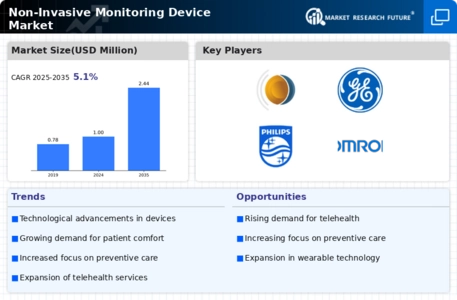
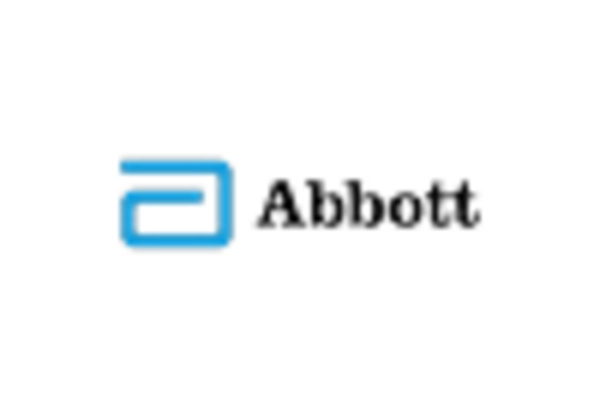
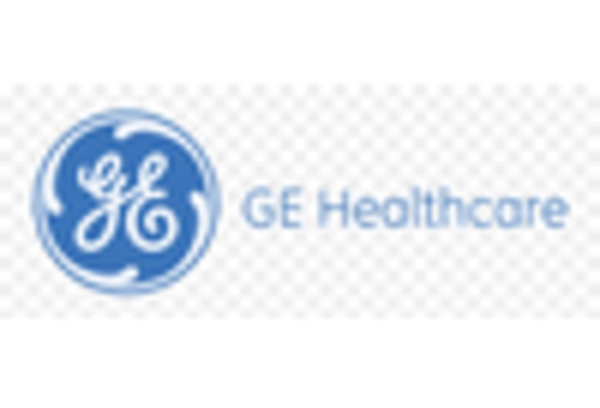

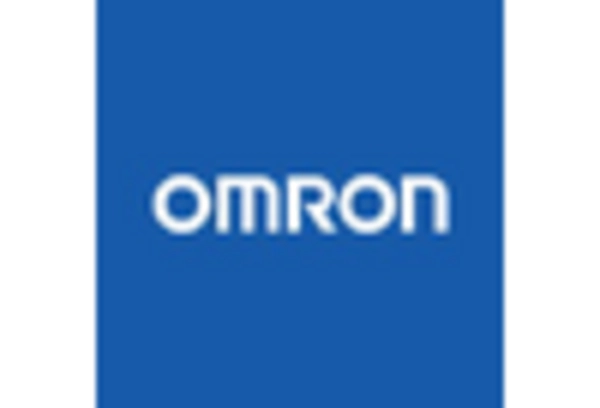
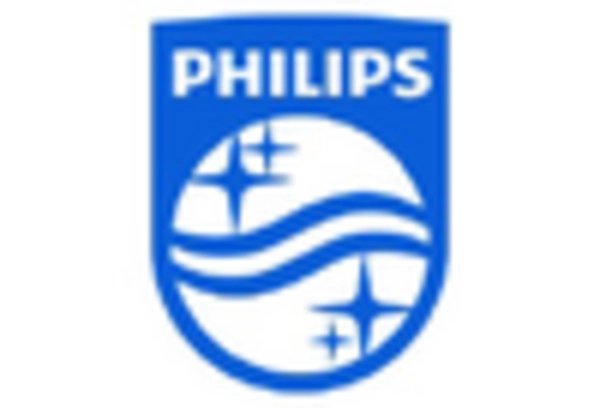
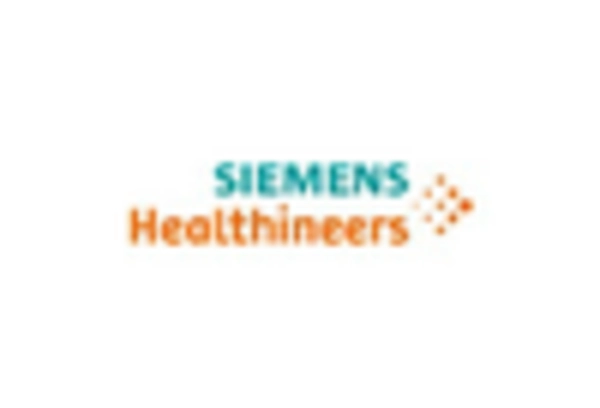









Leave a Comment